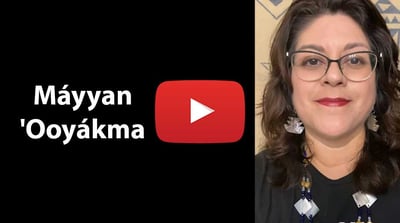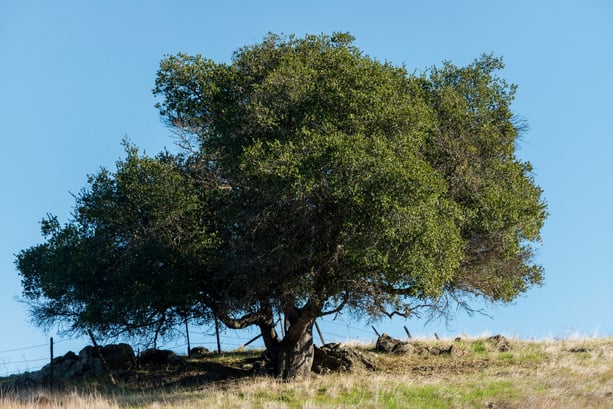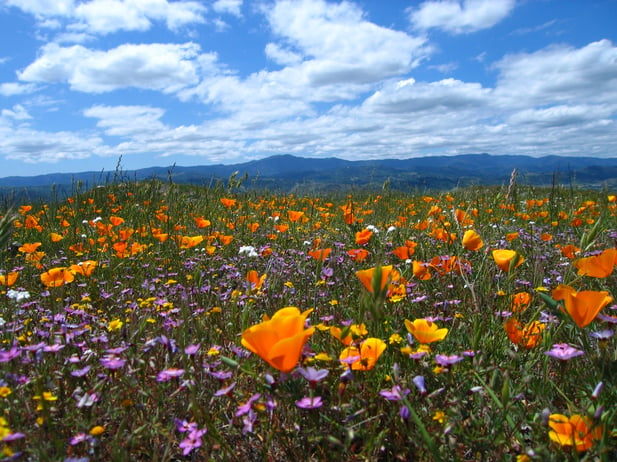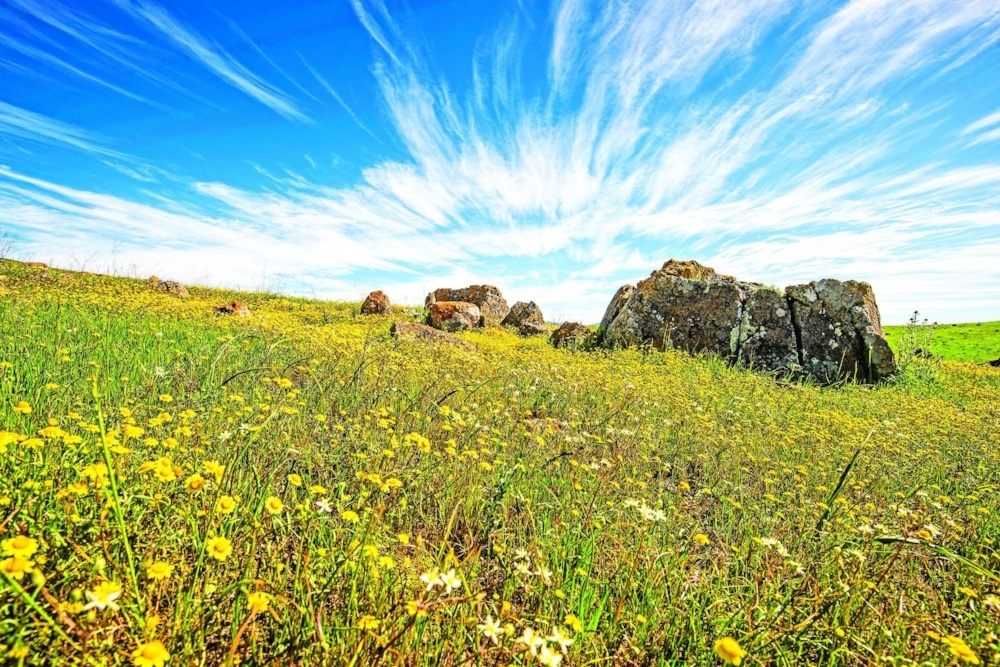On October 27, 2022, the Open Space Authority Board of Directors voted unanimously to include a Chochenyo translation of “Coyote Ridge” alongside the current preserve name. The preserve's official new name is Máyyan 'Ooyákma – Coyote Ridge Open Space Preserve.
Chochenyo is considered a dialect of what linguists now call the San Francisco Bay Costanoan language that also includes Ramaytush and Thámien (Milliken et al. 2009).
The Chochenyo name is a direct translation for Coyote Ridge. Máyyan 'Ooyákma – Coyote Ridge Open Space Preserve (which is slated to open to the public in 2023) is located in the Diablo Range foothills overlooking Coyote Valley, within the ethnohistoric territory of the Muwekma Ohlone Tribe of the San Francisco Bay Area (Muwekma Ohlone Tribe).

Click the image above to watch a video of Tribal Vice-Chairwoman Monica Arellano pronouncing Máyyan 'Ooyákma. Provided by the Muwekma Ohlone Tribe, the phonetic pronunciation is My-yahn Oiy-yahk-mah.
The Open Space Authority aims to promote awareness, justice, and equity regarding the displacement of the Indigenous Peoples from the lands the agency now owns and manages in Santa Clara Valley.
“This is the first time that Open Space Authority is integrating an Indigenous language into a preserve name,” says Andrea Mackenzie, General Manager of the Open Space Authority. “We hope this gives visibility to the Chochenyo language while also honoring the research and science that has protected this critical habitat for wildlife – including coyotes, bobcats, and tule elk, serpentine soils, and the rare and endemic plant and animal species like the federally threatened Bay checkerspot butterfly.”
In 2021, Open Space Authority Staff began consulting with the Muwekma Ohlone Tribe to develop bilingual interpretive materials for the Preserve’s Public Access Improvements Project. As a part of this research, the agency was made aware of the Preserve's location close proximity to significant habitation and burial sites in Coyote Valley and along Coyote Creek, which runs near the base of the Preserve.

The following is a statement from Charlene Nijmeh, Chairwoman, Muwekma Ohlone Tribe of the San Francisco Bay Area:
"For thousands of years, my ancestors have stewarded these lands including the Coyote Valley (Máyyan Wáayi) region including the Coyote Ridge (Máyyan 'Ooyákma) Open Space Preserve. Today our Muwekma Ohlone people still reside on these sacred lands in which we are connected to in a spiritual way. Coyote Valley and all the native wildlife, fish, birds, and plants that call it home continue to have a sacred relationship with our people.
It is our sacred duty to remind everyone of the importance of Mother Earth to us all and the importance of open spaces, sustainable developments, and sound environmental policies for all our futures. We also must protect our freshwater catchments and riparian corridors such as Coyote Creek (Máyyan Rúmmey) and the Guadalupe River (Thámien Rúmmey), and the land we all share and the air we all breathe.
It is a great honor for our Tribe to partner with the Santa Clara Valley Open Space Authority in naming the Coyote Ridge Preserve in our native Muwekma Ohlone language."

Monica Arellano, Vice-Chairwoman of the Muwekma Ohlone Tribe, brought the proposed name to the Tribe’s Language Committee for consideration in June 2022. The proposal was met with support, and the Committee provided additional recommendations for the Open Space Authority to support the interpretation of other physical and geographic features of the preserve, as well as the connections of the location to the Tribe.
Prior to the arrival of Spanish missionaries, the foothills adjacent to Coyote Valley, including Coyote Ridge, were important to Indigenous Peoples for hunting, plant collection, and quarrying. With Spanish settlement, missions, and laws, and subsequent governance by Mexico and the United States, Indigenous Peoples experienced loss of life, land, and culture. An example of this erasure is the full or partial loss of native languages, including the Chochenyo language, which the Muwekma Ohlone Tribe is actively working to steward and restore.
"As a public land preservation agency, it is important that we acknowledge and respect Indigenous Peoples working to restore and protect their culture, connection to the land, and their efforts to bridge past and future,” says Jennifer Hooper, Associate Open Space Planner and Tribal Liaison for the Open Space Authority. “We are grateful for our ongoing partnership with the Muwekma Ohlone Tribe and appreciate their collaboration on this preserve naming effort.”
The Open Space Authority will continue working with local Tribes through the Coyote Valley Conservation Areas Master Plan and other priority areas within Santa Clara Valley.
Related Links:
- Discovering Coyote Valley: Monica V. Arellano and Charlene Nijmeh of the Muwekma Ohlone Tribe of the San Francisco Bay Area
- Open Space Authority Board of Director's Resolution of Support for Native American Heritage Month
- Statement from Andrea Mackenzie: Indigenous Peoples Day

